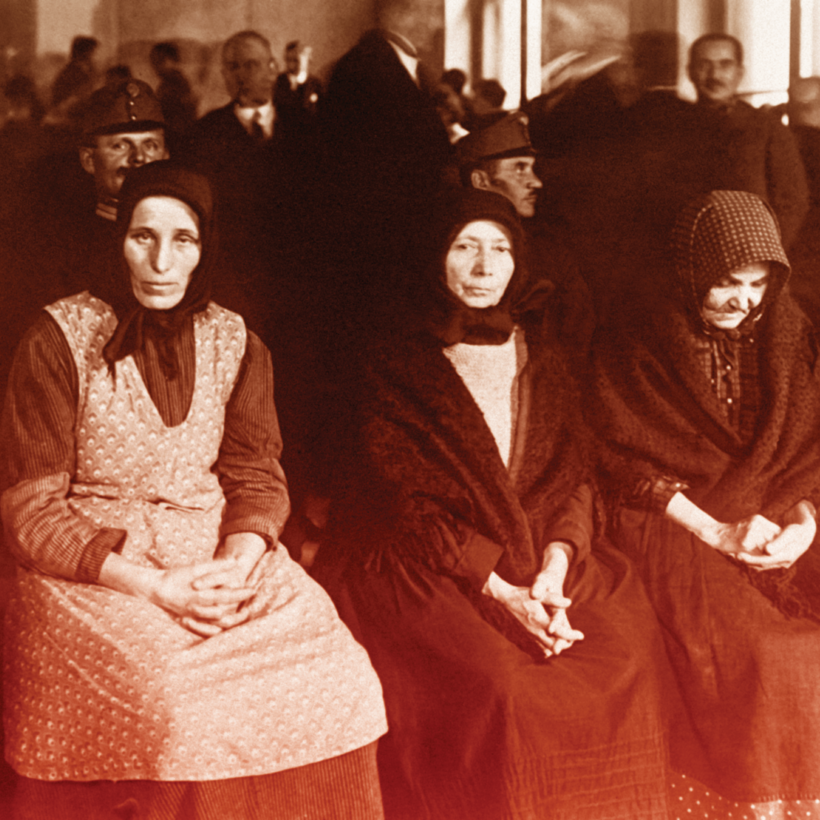While in prison awaiting trial for murder, Rozalia (Rose) Holyba had a recurring nightmare. She would dream that she was walking home along the banks of the Tisza River, searching for a place to build a new house. Suddenly, the soil would go soft under her feet. The ground would begin to shake. The soil would cave in and she’d sink into a hole. It was as if she were being swallowed up by quicksand. She would struggle to get out. She’d struggle to breathe. Every time she awoke from this nightmare, she would be gasping for air.
Another imprisoned woman, also charged with murder but kept in an entirely different cell from Rose, was having the same recurring nightmare. Walking down by the river. Looking for a place to build. The soil starts to give. She sinks into a hole. The earth, like a boa constrictor strangling its prey, begins to suffocate her. The only difference between her dream and Rose’s was that she was carrying a brick in her hand, presumably to lay the foundation for her new house.
Rose Holyba was one of dozens of women who went on trial in 1930 for the murder of scores of men in Nagyrév, Hungary. Attorney Janos (John) Kronberg, the prosecutor who tried the women, put the number of murdered men at 162, with the caveat that possibly hundreds more had been killed through the decades that no one would ever know about.
The murders occurred in surrounding villages as well, but Nagyrév was “the hornet’s nest,” and the queen of the hive was the village midwife, who distilled arsenic from flypaper and distributed it to the neighborhood women, almost all of whom were suffering abuse at home. “Why are you bothering with him?” she would ask, then she’d reach into her apron pocket and pull out a vial of her solution. At times, though not nearly as often, the midwife also used arsenic to snuff out the life of a newborn whom she believed had little to no chance of survival.
Nagyrév was “the hornet’s nest,” and the queen of the hive was the village midwife, who distilled arsenic from flypaper and distributed it to the neighborhood women.
While researching my book, The Angel Makers: Arsenic, a Midwife, and Modern History’s Most Astonishing Murder Ring, my assistant and I were ensconced at the archives in Szolnok, Hungary for a couple of months. Week after week, Attila Tokai would read aloud the documents—translating into English as he did—and I’d type the info into my MacBook. A lot of the material was repeated information. There might be, for example, two gendarme reports on the same event, one providing slightly more detail than the other. Or multiple copies of a particular witness’s testimony. I often felt like a secretary taking dictation for eight hours a day.
But then he’d read something that was so striking that I’d just stop typing and look over at him. The two women’s dreams (from a psychologist’s report). A heartbreaking confession. The autopsy reports, eerily written with literary flare. And I’d feel as if the soil beneath my own feet was softening, drawing me down into a most profound dream in which I had to look at humanity’s dark face as it asked me to bring it into the light.
Late one morning, I peeked into one of the boxes and pulled out a document, a weathered form about half the size of a piece of printer paper. Handwritten in an elegant script was the name Istvan (Steven) Cser.
“What’s this?,” I asked Tokai.
He leaned over to take a look.
“It’s a death certificate.”
I examined it. The number 3 was written on a printed line across from the name.
I pointed at it and looked up at Tokai.
“That’s how many days he lived. It was a baby,” he said.
I got up and left the room. Down the hall was a bathroom. I went inside and wept.
When I came back, I gave some excuse about forgetting something in my car, though I was returning as empty-handed as before.
“It gets hard sometimes in here,” he said.
He changed the subject. He told me that the following morning, before his walk to the archives, he planned to take the same route to work that prosecutor Kronberg had taken every day, and suggested we could follow that route again during our lunch break.
“It’s along the towpath and it’s very beautiful.”
I said it was a fine idea.

Patti McCracken’s The Angel Makers: Arsenic, a Midwife, and Modern History’s Most Astonishing Murder Ring is out now from William Morrow


